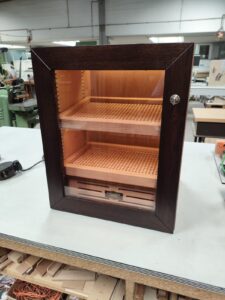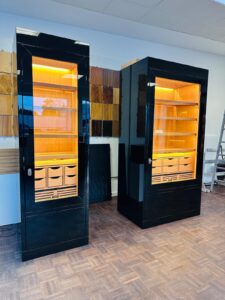
European Lacewood

Trade names: Lacewood, Quartered Plane, European Lacewood
Origin: Europe
Range: All over Europe with exception of Northern and Northeastern Europe. Grows almost nowhere but alongside roads and in gardens and parks. No forestry cultivation. Lacewood trees often have large diameters.
Uses: Veneer for production of furniture and architectural purposes. The typical „snakeskin“ marking is brought about by slicing true quarters. Where rays are cut at an angle of 180° to produce decorative ellipse-shaped figuring. Lacewood can be machined well and easily with all tools. Planed surfaces have a beautiful luster. Polished surfaces give the best effect due to the texture.
Character: The heartwood is reddish-grey to brown in color and changes to a wine-red when steamed. The longer it is steamed, the darker the color. Color variations within a log are common and often not to be avoided.
Particularities: The Greeks regarded the European Lacewood (P. orientalis) dedicated to Zeus as sacred. And in many places they served as a village tree. They are similar to the lime tree in Central Europe or the elm in France. The philosophers used their dense foliage to teach.
These trees are truly majestic phenomena and are up to 1000 years old. The most famous is the Plataniotissa temple at Kalavrita in Greece. According to legend the tree has been standing there since 352 AD. The tree has a circumference of 23 meters.
Natural product wood
Wood is a natural product, which can has colour differences and growth-related irregularities. Deviations in structure and colour are a quality feature for real wood. Growth, colour, structure and grain are unique in every tree and make every Gerber Humidor unique!
Digital illustrations of the wood samples are always only indicative picture and do not provide a guarantee.
Not all woods are available at all times and suitable for every Gerber Humidor. Please do not hesitate to contact us for further information.

